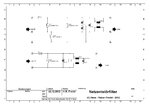Aditya070390
Newbie level 6
hi everyone,
i have a circuit to turn on/off a relay depending on two sensor inputs using pic microcontroller,i use a step down transformer to get 12-0-12 output voltage,the problem is ,when i switch on/off the other electrical devices in my home,this relay turns on automatically irrespective of the sensor inputs,help me in providing isolation to my circuit

i have a circuit to turn on/off a relay depending on two sensor inputs using pic microcontroller,i use a step down transformer to get 12-0-12 output voltage,the problem is ,when i switch on/off the other electrical devices in my home,this relay turns on automatically irrespective of the sensor inputs,help me in providing isolation to my circuit

